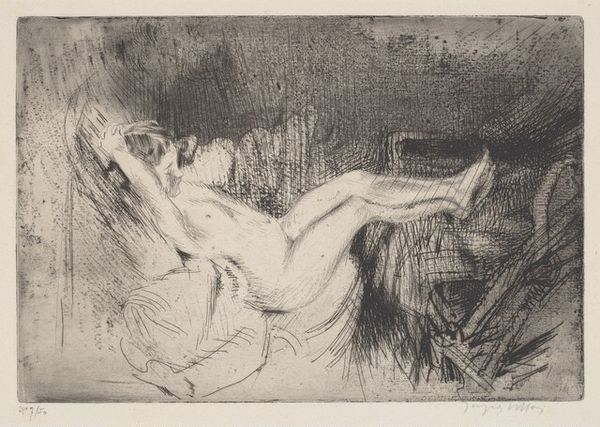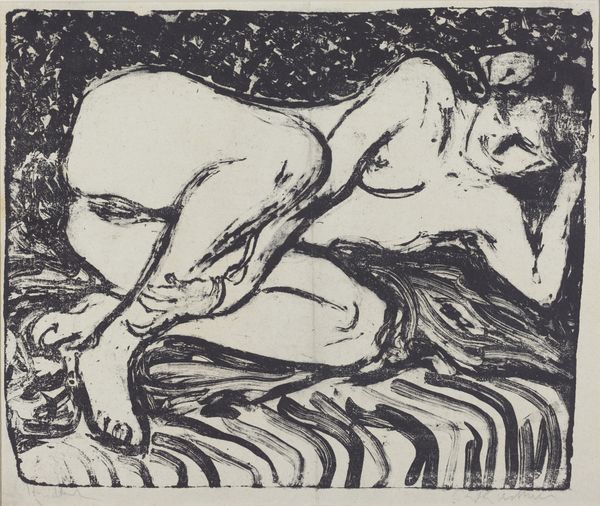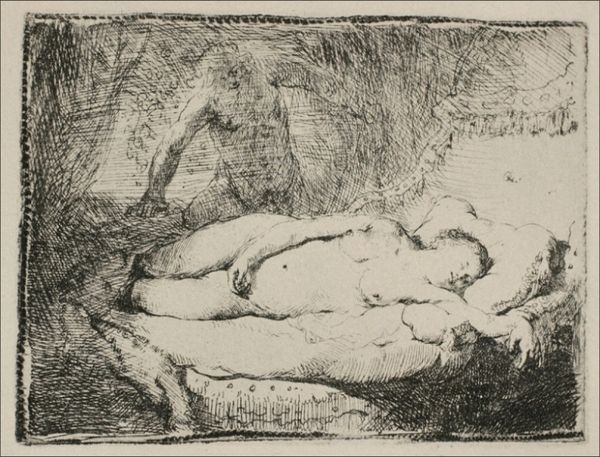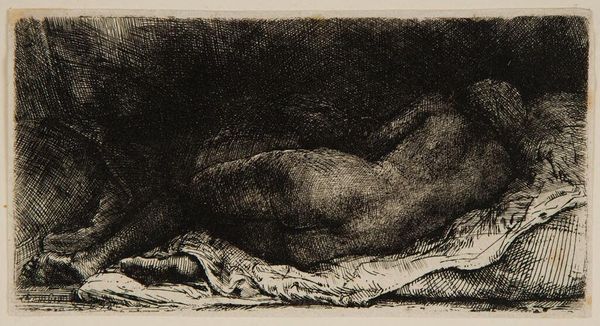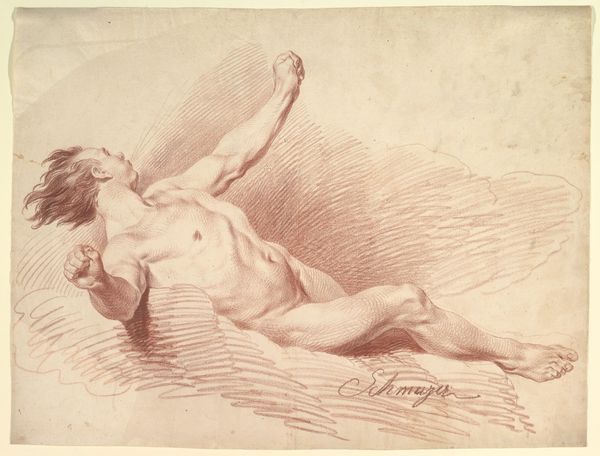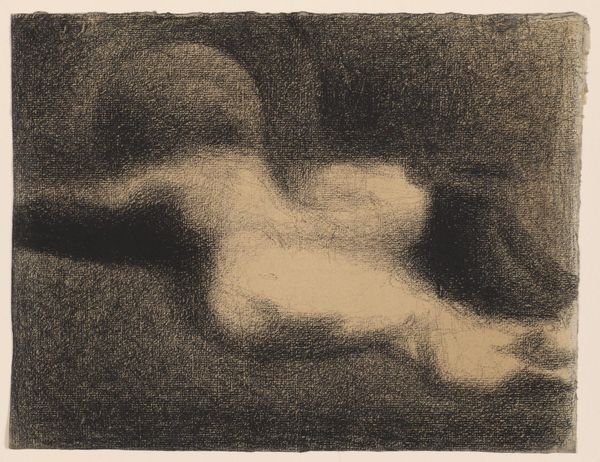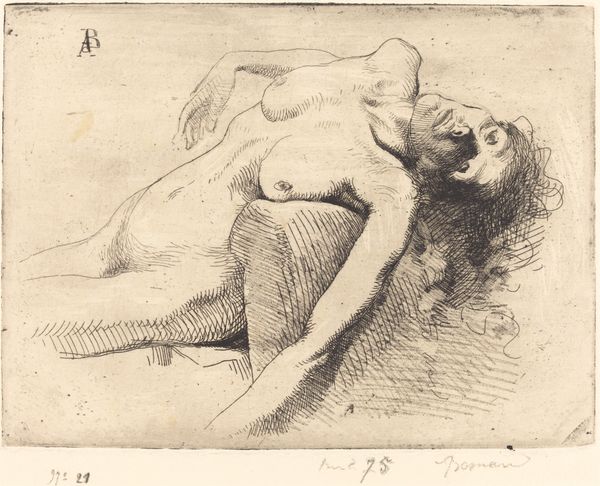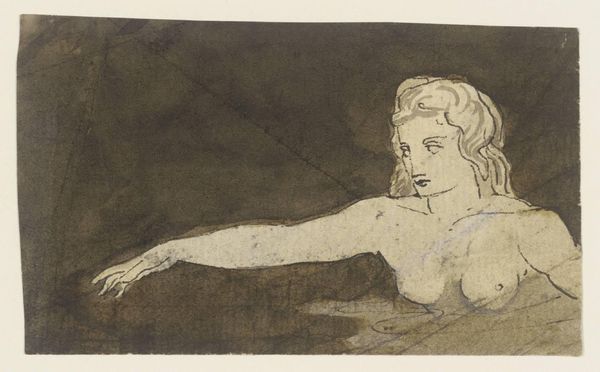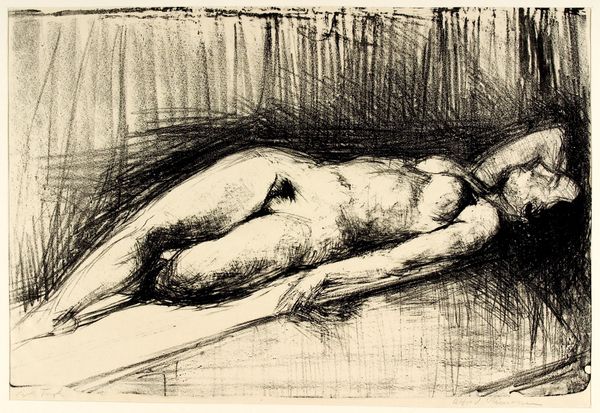
drawing, ink
#
drawing
#
ink painting
#
etching
#
mannerism
#
figuration
#
ink
#
nude
Dimensions: 212 mm (height) x 317 mm (width) (bladmaal)
Curator: Melchior Lorck's "Reclining Woman", executed in ink in 1569, is a remarkable drawing housed here at the SMK. What are your first thoughts? Editor: The ink work is striking – so linear, almost architectural in its depiction of the landscape around her. There's a strange dichotomy of relaxation in the pose yet intensity in the sharp lines. Curator: Absolutely. The rigid lines framing the woman evoke a kind of confinement, while the reclining figure suggests leisure. Consider the period: this image appears at a time when notions of ideal femininity were highly policed. The woman is nude, yet posed in a way that is oddly demure, isn't it? Almost defiant. Editor: Exactly! And thinking about this drawing within a feminist framework, what does it mean for a male artist to capture the female nude in the late Renaissance? Lorck was a court painter, so this image might serve the pleasure of an elite audience. Curator: Good point. Lorck served in the courts of both the Ottoman Empire and various European rulers. His work frequently intersects politics and art. Editor: Perhaps the drawing engages in debates about European attitudes toward sexuality at the time. How did artistic representation contribute to controlling women's bodies and shaping perceptions? Curator: Certainly. Lorck was also creating detailed drawings and prints documenting cultural and political life during his time at the Ottoman court. I think we can see in this picture the beginnings of that ethnographic sensibility that will later come to full maturity. What seems a purely "artistic" work carries implicit social documentation. Editor: Looking at the sharp contrasts, I find a certain discomfort. Perhaps that's reflective of the contradictory expectations placed upon women in the 16th century – simultaneously idealized and scrutinized. Curator: Yes, a drawing can often hide many stories, prompt us to question, to see through layers of both artistic technique and the social environments within which an artist like Lorck was living and working. Editor: Absolutely, I agree that this piece highlights a significant intersection of art, power, and cultural identity during that period. It is both fascinating and, indeed, deeply unnerving.
Comments
No comments
Be the first to comment and join the conversation on the ultimate creative platform.

